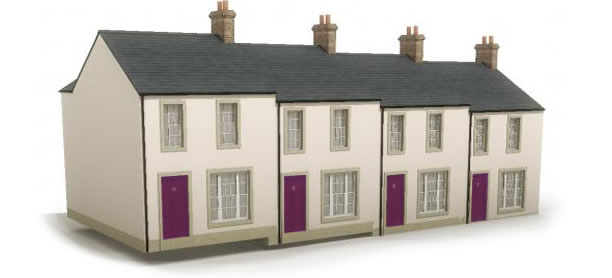 Landlord Insurance - Specialist Cover for Landlords
Landlord Insurance - Specialist Cover for Landlords
Need to insure a rented property in the UK? Whether you own one property or a portfolio of properties, if you rent privately, or let to Local Council or DSS – ab&c insurance makes it easy to buy landlords insurance – competitively and with minimal hassle to you.
We know that in this busy world you don’t have time to ring around or click on every web site offering Buy to Let Insurance, Landlord Insurance, Residential and Property Owners Insurance. Let us through our web offering take the hassle out of this process but still offering choice and a range of competitive rates for your landlord insurance needs. At ab&c insurance, we guarantee to check the market and provide you the most competitive rates for But-to-Let Insurance, without compromising the quality of the product.
Let us save you money!
We have access to more insurers if you let us search for you.
Click the "Quote" button below, complete the form and our team will call you back with the best cover and quote available.
(During office hours - Monday to Friday - excluding bank holidays)
![]() or call us on FREEPHONE 0800 435594
or call us on FREEPHONE 0800 435594
Why do I need Landlord Insurance?
There are many reasons why you need landlord insurance or property owners insurance. Primarily landlord insurance or property owners insurance offers protection to:
You: As an individual or as a limited partnership or company, you need Insurance to protect your investment – both the bricks and mortar, and also the revenue that is derived from the rental property. Accidents do happen, and in this time of tighter budgets none of us can afford the risk of an insured incident happening to your property - especially if this responsible to rectify.As a Buy-to-Let property owner – managing the day to day “business” of renting - a single house, block of flats, or a portfolio of properties, means that you have given both time and money to an asset. This asset is something that you wish to see provide a return on – either in the long term as a valuable property linked to your pension provision or a monthly revenue stream which you are dependent on. As with any asset this needs protection and rented property insurance or “Landlords insurance” is designed to protect:
A) The cost of repairs if your property is damaged by fire, storm, flood and Lightning
B) The cost of replacing contents as part of your Buy-to-Let agreement in the circumstance as outlined above
C) Liability to Third Parties and your Tenants (and their property )which are damaged as a result of work you are carrying out on your property
D) Protecting the rental income of your property following an incident that results in you being unable to received rent, or having to provide alternative accommodation for tenants following and insured incident.
E) Providing Employers’ Liability insurance for tradesmen that are employed to maintain your property.Your Tenants - Responsibilities as a Landlord
As a property owner and landlord you have legal responsibilities to your tenants. Depending on the location of the property (England Wales/Scotland and Northern Ireland) these can involve, (for example and not an exhaustive list)
A) Ensuring the property is fit for purpose.
B) Continued monitoring and repair of the building fabric, including drains gutters, roof, foundation and external pipes.
C) As a But- to - Let Landlord you must ensure that services are maintained – water, gas, electrical supply (compliant to both the Electrical Equipment (Safety) Regulations 1994 and The Plugs and Sockets etc. Safety Regulations 1994) but also to that the basins, sinks, baths and toilets and drains remain in working order. Although not a legal requirement, the provision of a Smoke Detector and Carbon Monoxide Alarm for your tenant’s safety would be advisable.
D) Landlords must ensure that the provided heating system is in working condition.
E) If you rent your property furnished, then it is imperative that you ensure your property is compliant with the Furniture and Furnishings (Fire) (Safety) Regulations 1988 (As amended 1989 and 1993 and 2010) Under this legislation it is (see www.firesafe.org.uk/furniture-and-furnishings-fire-safety-regulations-19981989-and-1993/ )
F) Fixed Wiring Electrical Inspection
It’s a near certainty that your property uses electrical power in some way! Therefore, in order to manage risks and comply with the law, your fixed wiring needs to be inspected regularly. Meeting this requirement effectively, and ensuring that the benefits outweigh the costs, requires you to be familiar with the concept of fixed wiring inspection, and to know what approach to take.The independent safety inspection industry tends to categorise electrical equipment and systems as follows:
• PAT – Portable Appliance Testing – for items like kettles.
• Plant – for items such as motors, welding equipment, fans and air conditioning units
• Fixed wiring – all the equipment required to distribute electrical power safely from the origin to all the plant, equipment and appliances at the relevant site. Fixed wiring includes conductors (e.g. cables and cords), connections (e.g. distribution boards), switching devices, protective devices (e.g. fuses, circuit breakers and residual current devices – RCDs), enclosures and, where applicable, fire barriers.Fixed wiring’s broad definition means that its inspection can encompass little or much. At its simplest, the inspection is a non-intrusive visual check of accessible components such as distribution boards, sockets, cables, cords and light fittings. At its most thorough, it could comprise the following:
1. An appraisal of the job, featuring:
2. Job-specific risk assessment
3. Survey and testing of the installation’s earthing, continuity, insulation, polarity, layout and accessibility arrangements
4. Enquiries to determine the degree to which parts of the system can be isolated
5. Review of available documentation
6. Visual check of all accessible components
7. Labelling, i.e. unique identification of circuits
8. Functional tests to check whether all the relevant
9. Components do what they are supposed to do
10. Thermographic testing to quickly detect hidden defects as ‘hot-spots’ in the system
11. Clear reporting – publishing circuit diagrams, all test results and a summary of any defects with actions recommended to make safe.
British Standard BS 7671: 2008*
A suite of test methods and required outcomes are specified in detail in the British Standard BS 7671: 2008, often referred to as the IEE Wiring Regulations. In fact, the requirements of this standard are not regulations in the legal sense.The frequency and scope of your in-service fixed wiring inspections should always be determined by an assessment of the risks. (BS 7671: 2008 does provide guidance on both frequency and scope of inspection for low voltage installations (less than 1,000V a.c. or 1,500V d.c.), based on criteria like the type of premises: e.g. ‘Three-yearly for a factory and five-yearly for offices.’)
Note: this British Standard does not cover the public electricity supply, electricity on vehicles, nor fixed wiring in quarries, mines and other hazardous areas (where there is an explosion risk).
The Law
The law says that all employers must safeguard the health and safety of all people affected by their undertaking and, in the UK, it is a criminal offence to fail in this duty of care.
Fundamentally, employers are required to assess the risks associated with their business and manage those risks at a tolerably low level. More specifically, employers are required to comply with applicable regulations; often a large number of them.For fixed wiring, the specific regulations are the Electricity at Work Regulations, 1989 (EAW). The HSE has issued a very useful document, which is freely available to download from their website, entitled ‘Memorandum of Guidance on the Electricity at Work Regulations, 1989.’
You will note that this guidance is non-prescriptive, in keeping with the goal-setting format of the regulations, which means that maintenance is a statutory requirement, but the scope and frequency of maintenance and inspection should be risk-based: i.e. suitable and sufficient.In spelling-out the requirements of the EAW regulations, the HSE guidance makes it clear that fixed wiring shall be maintained so as to prevent danger (so far as is reasonably practicable) and that regular in-service inspection is an ‘essential’ part of preventative maintenance.
For prescription, you can turn to the British Standard mentioned above (BS 7671: 2008). Remember: This British Standard is comprised of non-statutory regulations
How to approach fixed wiring in-service electrical inspection
A balance always has to be struck between inspection and maintenance. Too little inspection/repair, and the risk will be too great; too much inspection/repair and the cost will be too great. Of course, the more preventative your maintenance, the lower the reliance on in-service inspection and repair to control risks in the first place. You will need to strike a balance between inspection and maintenance (repair) activities that you are comfortable with.Another important consideration is whether you use the same inspectors for maintenance or perform maintenance independently. You will also need to choose whether to subcontract or go in-house, the depth and frequency of the inspection (and maintenance); and the degree of detail in the inspection reports.
You may simply wish to add electrical inspection to whatever in-service inspection arrangements you have for other items, such as your lifting equipment.
Deciding on the depth and frequency of inspection, and the detail of reports, may be more difficult. The decision needs to be based on a potentially complex interaction between inspection activities, maintenance activities, production requirements, and stakeholder expectations.Summary
Your property and its appliances (if provided) and fixed wiring should be inspected routinely
The law is goal-setting and requires the inspection (and maintenance) regime to be suitable and sufficient: i.e. risk-based.For Further information please contact us on 0845 3008150 and speak to one of our Commercial Team
Further reading: http://www.hse.gov.uk/pubns/priced/hsr25.pdf
Contact for NICEIC Contractors: http://www.niceic.com/

